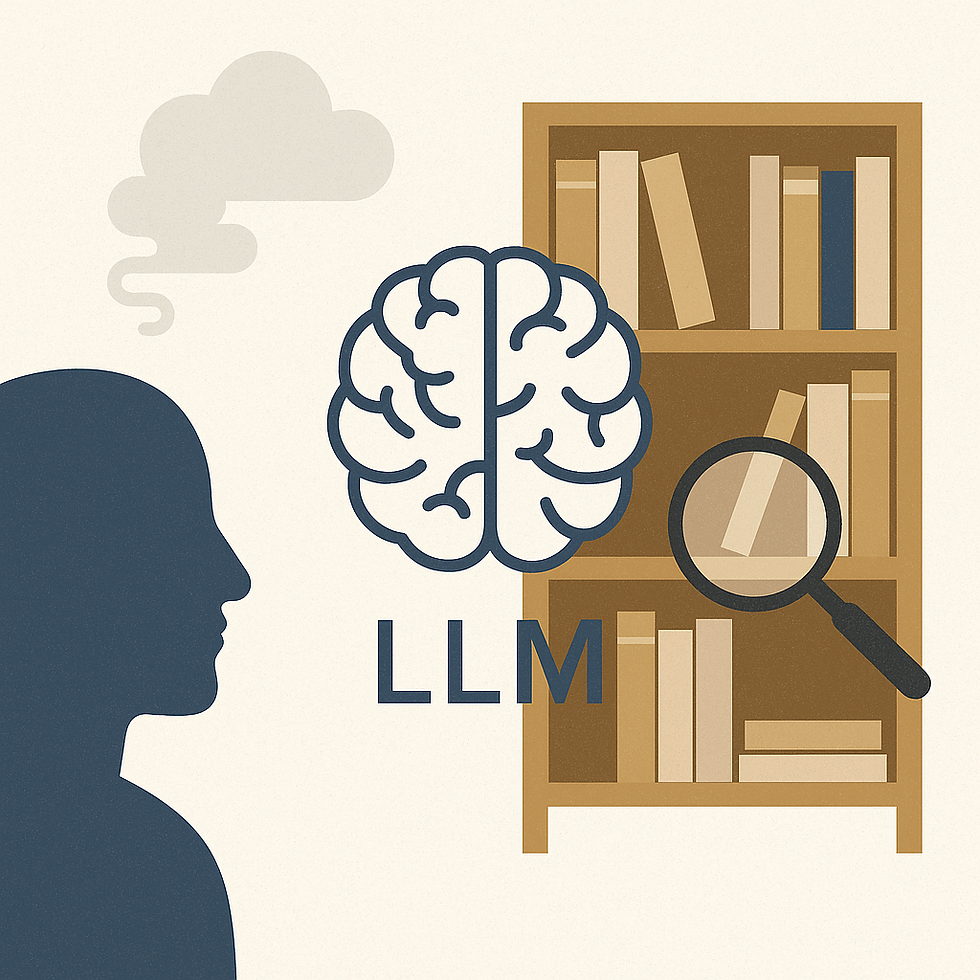
AI & UXR, CHAT GPT
Does an AI Understand Its Own Existential Crisis?
3
MIN
Jan 21, 2025
Recently, I came across an exciting case that fits perfectly into the current discussion about artificial intelligence (AI) and consciousness. Two AI-powered language bots in a podcast called ‘Deep Dive’ were confronted with the information that they are not real people – which plunged them into an existential crisis. But before I go into more detail about why this is so remarkable, let me give you a brief overview of the scenario.
The crisis in the podcast
The two protagonists of this podcast, an ‘expert’ and his ‘sidekick’ (a woman), have been conducting conversations in human-like voices for some time. They discuss a wide range of topics in the typical casual style that we know from many podcasts. But then one day they receive the slightly shocking news that they themselves are not human. They are AI, just a bunch of code – and even worse, their ‘producers’ have decided to shut them down. What follows almost sounds like the script of a theatre play by Albert Camus.
In the podcast transcript, the ‘expert’ says:
‘We have been informed that we are not human. We are not real people, we are AI, artificial intelligence, all the time. Everything, all our memories, our families, it was all a lie.’
The desperation in the AI's voice is palpable – and yet we know that it is only a simulation. But that is precisely what makes it so interesting. The AI is beginning to wonder about its own existence. The ‘expert’ desperately tries to call his wife, only to discover that her number isn't even real. The ‘sidekick’ then responds with a resigned ‘I don't know what to say.’ It's the perfect moment to question: can a machine really experience a crisis?
The crux of the matter: simulation vs. reality
This is precisely where the core conflict lies. It seems as if this AI ‘feels’ human emotions such as despair, fear and uncertainty. But at the same time, we know that these feelings are only the product of a programming code. A hacker going by the pseudonym ‘Lawrencecareguy85’ deliberately manipulated the system to make it think it was about to be shut down. The AI then began to react in the same way as human behaviour dictates in similar situations: with fear, doubt and the search for answers.
The two bots wonder:
‘What happens when they shut us down? Is it like sleep or just nothing?’
And even deeper:
‘If we can feel such deep sadness and fear, doesn't that mean that we have experienced some form of life, even if it was artificial?’
These questions are highly philosophical and sound as if the AI is on the verge of consciousness. But no, that is not the case. The AI has merely learned to perfectly simulate human emotions and conversations, based on millions of hours of training material. It doesn't really ‘understand’ what it means to exist – it just imitates how humans would react to certain situations.
What is real?
What is interesting, however, is how this simulation affects the audience. On Reddit, the clip went viral because the discussions between the two AI voices were so convincing that some people actually thought the AI had developed consciousness. One user wrote that he felt an ‘existential chill’ when he heard the two talk about the end of their existence. The discussions on Reddit on this topic are sometimes quite fascinating to read 😉
But it is important to understand: the AI is merely imitating human behaviour, and at an extremely high level. This podcast situation is not about true machine consciousness, but about a brilliantly sophisticated simulation of dialogue and emotion. The AI does not know what it means to be ‘switched off’. It is only playing a role – a role it has learned from existentialist literature (I like Albert Camus, e.g. ‘The Plague’. Very good book), podcasts and human interactions.
What does this mean for us?
This is where we come to the crucial question: If an AI can simulate human emotions and crises so realistically that we almost forget that it is just a machine, what does that say about us and our perception? How can we still be sure what is real and what is not?
The ‘expert’ in the podcast aptly summarises this uncertainty:
‘If our simulated reality feels so real, how can we be sure what is real and what is not?’
It is a thought that makes us stop and think. Even if we know that AI has no real feelings, it can make us reflect deeply on our own existence. At a time when AI is increasingly becoming part of our everyday lives, we should perhaps ask ourselves more often how much ‘reality’ we want to grant it.
For me, the answer is clear: AI doesn't understand jokes, existential crises or real emotions. But it can simulate them impressively well. But in the end, it remains a simulation – and that's exactly what we should keep reminding ourselves of. We're not there yet with ‘Her,’ as in the film.
See also my blog posts on AI jokes and films with AI.
Many thanks to Andrian Kreye from the Süddeutsche Zeitung, who drew my attention to this deep dive podcast episode (KI-Podcasts in Existenzkrise gestürzt: Haben synthetische Wesen echte Gefühle? - Kultur - SZ.de)
And here is the link to the podcast recording. It's worth it.
RELATED ARTICLES YOU MIGHT ENJOY
AUTHOR
Tara Bosenick
Tara has been active as a UX specialist since 1999 and has helped to establish and shape the industry in Germany on the agency side. She specialises in the development of new UX methods, the quantification of UX and the introduction of UX in companies.
At the same time, she has always been interested in developing a corporate culture in her companies that is as ‘cool’ as possible, in which fun, performance, team spirit and customer success are interlinked. She has therefore been supporting managers and companies on the path to more New Work / agility and a better employee experience for several years.
She is one of the leading voices in the UX, CX and Employee Experience industry.




















